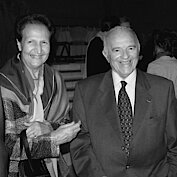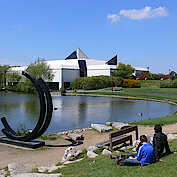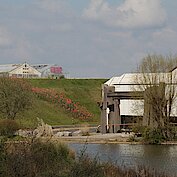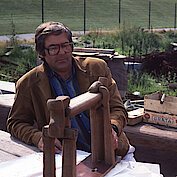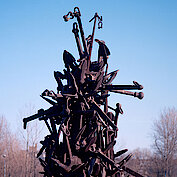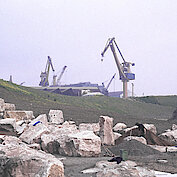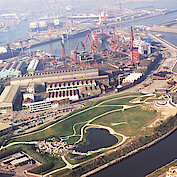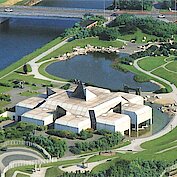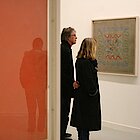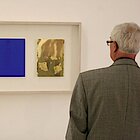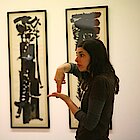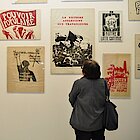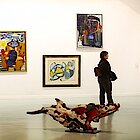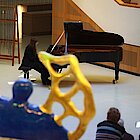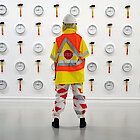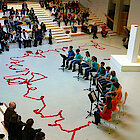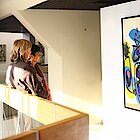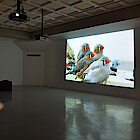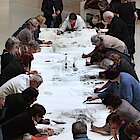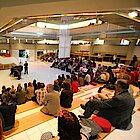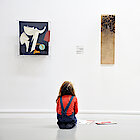Surrounded by its garden of sculptures and stones,
water and wind, the LAAC promotes the public’s discovery
and interaction with the arts, via a rich, dynamic programme
of exhibitions, events and activities designed to interest
and engage all visitors.
The LAAC was born by the generous donation to the City of Dunkirk of an exceptional collection of 20th-century artworks, on the initiative of Gilbert Delaine; this engineer with a passion for contemporary art, President and founder of the association L’Art Contemporain, garnered the support and sponsorship of some sixty local businesses in the 1970s and ‘80s. Today, the LAAC presents two large-scale exhibitions annually and four temporary exhibitions in its unique Graphic Arts Room, in addition to its permanent collection of over two hundred ‘Must-See Works’ and its one-of-a-kind sculpture garden.
THE LAAC IS ART DATING FROM WWII TO THE PRESENT DAY
Rare museum capable of presenting a panorama of French art from the mid-1940s to the late ‘80s, the LAAC pursues a rich cultural policy in complementarity with the projects developed by the FRAC Grand Large — Hauts-de-France regional collection of contemporary art. The institution’s exhibitions are designed around the leading artists of this period (Yves Klein, Marie Raymond, Olivier Debré, Anthony Caro, Jaques Doucet, Jean-Michel Meurice…), questioning and exploring contemporaneous themes and movements (‘Poetics of Objects’, ‘Every body’, ‘Cobra’…). The LAAC also opens its doors to contemporary creation, commissioning or presenting current works to dialogue with its collections and projects: Bertrand Gadenne, Étienne Pressager, Séverine Hubard, Sarah Sze, William Eggleston, Bernard Moninot, etc.
THE LAAC IS ALSO…
• The vast Graphic Arts Room, where visitors are free to explore over two hundred drawings and prints exhibited in sliding showcases.
• The literary, photographic and filmic documentation area, to delve further into the museum’s works and artists.
• On-site thematic activities and tours for all visitors.
• Numerous events, encounters, conferences, concerts and screenings for mixing and mingling.
• And Sundays, it’s free!
A LAAC FOR EVERYONE…
In 2018, the LAAC was awarded the ‘Osez le Musée’ national distinction for its efforts to attract and engage the entire public. The LAAC is a convivial location for gatherings and meetings, for conversations and discussions, for strolls with family and friends, for solo or group visits, with workshops for young visitors, an auditorium, a surprising forum, a lounge area and, most importantly, a friendly and ever-attentive staff.
THE LAAC’S SYNERGIES
The LAAC and the FRAC Grand Large – Hauts-de-France together form the Dunkirk Contemporary Art Hub and in 2019 conjointly gave birth to the ambitious triennial: GIGANTISME – ART & INDUSTRIE. The LAAC is also part of a dynamic network of cultural institutions, exhibition spaces and production sites (the Bourbourg CIAC, the Château Coquelle Cultural Centre, etc.), favouring an open, outward-looking region. In close collaboration with the region’s other museums, the LAAC also maintains special relations with leading cultural institutions both in France and throughout northern Europe (CNAP, MNAM/CCI, etc.), as well as with numerous artistic foundations. It thereby contributes to the Dunkirk territory’s national and international influence and fame.
HISTORY
In the 1970s, inspired by the industrial boom and modernity of Dunkirk, the engineer Gilbert Delaine set about forever transforming the territory’s cultural landscape. Thanks to the artists Arthur Van Hecke and Ladislas Kijno, he acquired a marked sensitivity to contemporary art and began travelling the world to discover diverse exhibitions and make the acquaintance of active artists.
Gilbert Delaine’s obsessive dream was to create a local space for presenting the most contemporary creations, mirroring the ever-innovative spirit of his native Dunkirk.
In 1974, he persuaded sixty local businesses to become patrons of this ambitious project and created the association L’Art Contemporain, thereby allowing for the birth of a collection and eventually a museum.
1979 saw the creation of both the sculpture garden, designed by Gilbert Samel in collaboration with the artist Pierre Zvenigorodsky, and the modernist architecture of the museum imagined by Jean Willerwal. Situated in the immediate vicinity of Dunkirk’s industrial shipyards, with their vast buildings, towering cranes and thousands of workers, the chosen site constituted a veritable ‘landscaping event’.
The new building was based ‘more on intuition, passion and love, than on rules and regulations!’ Jean Willerwal
